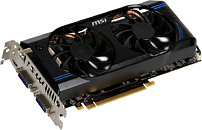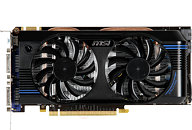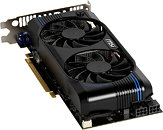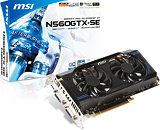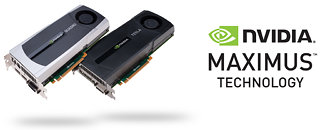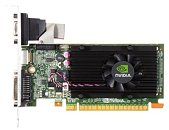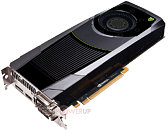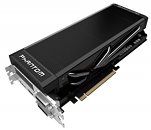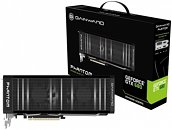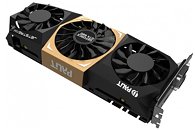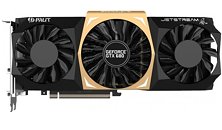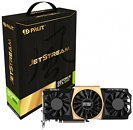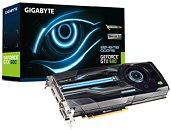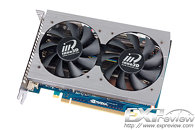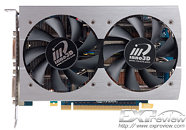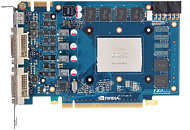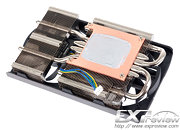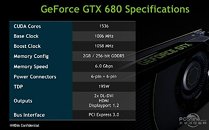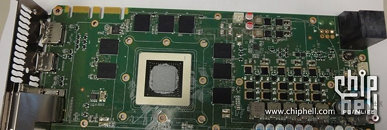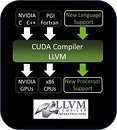Apr 1st, 2025 02:36 EDT
change timezone
Latest GPU Drivers
New Forum Posts
- Build complete! Any thoughts on undervolting? (20)
- Case fans work but can’t sync w/ rgb and stuck full rpm (1)
- Your PC ATM (35317)
- Undervolt i9-14900HX Laptop Newbie (8)
- Help with System Recommendations (5)
- can i yust connect 4 pin cpu coler to 5 pin ? (9)
- PCB serial number explanation Asrock rx5700xt Taichi oc+ (7)
- Post your JetStream 2 speeds! (161)
- Msi Vector 16HX Undervolt (3)
- Bios Mod for an old pc (15)
Popular Reviews
- Sapphire Radeon RX 9070 XT Pulse Review
- DDR5 CUDIMM Explained & Benched - The New Memory Standard
- ASRock Phantom Gaming B850 Riptide Wi-Fi Review - Amazing Price/Performance
- Palit GeForce RTX 5070 GamingPro OC Review
- SilverStone Lucid 04 Review
- Samsung 9100 Pro 2 TB Review - The Best Gen 5 SSD
- Enermax REVOLUTION D.F. 12 850 W Review
- Sapphire Radeon RX 9070 XT Nitro+ Review - Beating NVIDIA
- Assassin's Creed Shadows Performance Benchmark Review - 30 GPUs Compared
- AMD Ryzen 7 9800X3D Review - The Best Gaming Processor
Controversial News Posts
- MSI Doesn't Plan Radeon RX 9000 Series GPUs, Skips AMD RDNA 4 Generation Entirely (142)
- Microsoft Introduces Copilot for Gaming (124)
- AMD Radeon RX 9070 XT Reportedly Outperforms RTX 5080 Through Undervolting (119)
- NVIDIA Reportedly Prepares GeForce RTX 5060 and RTX 5060 Ti Unveil Tomorrow (115)
- Over 200,000 Sold Radeon RX 9070 and RX 9070 XT GPUs? AMD Says No Number was Given (100)
- NVIDIA GeForce RTX 5050, RTX 5060, and RTX 5060 Ti Specifications Leak (96)
- Retailers Anticipate Increased Radeon RX 9070 Series Prices, After Initial Shipments of "MSRP" Models (90)
- China Develops Domestic EUV Tool, ASML Monopoly in Trouble (88)
News Posts matching #CUDA
Return to Keyword Browsing
NVIDIA to Launch GeForce GTX 690 Before May 5
It turns out that the cryptic picture posted on NVIDIA GeForce Facebook page indeed is a teaser for NVIDIA GeForce GTX 690, a dual-GPU graphics card based on two GK104 GPUs. Several independent sources told SweClockers that NVIDIA is preparing to launch this SKU "in the week beginning April 30," i.e., no later than May 5. It is quite possible that NVIDIA launches it on the 30th, to share the limelight with Intel's new 3rd Generation Core "Ivy Bridge" processors, which will be released to market on the 29th. The card will feature a total of 3072 CUDA cores, and 4 GB of GDDR5 memory. We haven't heard much about its competitor, the Radeon HD 7990.

MSI Intros GeForce GTX 560 SE OC Graphics Card
Over the weekend, MSI launched a factory-overclocked variant of its GeForce GTX 560 SE graphics card (model: N560GTX-SE-M2D1GD5/OC). Designed identical to the card MSI started its GTX 560 SE lineup with, the OC model features out of the box clock speeds of 750/1500/957(3828) MHz core/CUDA cores/memory(effective), against reference clock speeds of 736/1472/957(3828) MHz. The card packs a custom-design PCB that makes use of copperMOS, and a custom-design cooler that uses two fans to ventilate a large aluminum fin heatsink fed by copper heat pipes. The card features 288 CUDA cores, and 1 GB of GDDR5 memory across a 192-bit wide memory interface. Expect this card to cost under $200.

NVIDIA and Partners Transform Entire Content Creation Workflow at 2012 NAB Show
Content creators ranging from 2012 Oscar winners Industrial Light & Magic, a division of Lucasfilm Ltd. (Rango) and Pixomondo (Hugo) to up-and-coming independents such as Bandito Brothers (Act of Valor, Waiting for Lightning) and smaller creative services shops such as Dawnrunner Productions and Digital Spatula are increasing the speed, quality and productivity of their workflows through the adoption of GPU computing featuring NVIDIA Quadro and Tesla GPUs.
Visual effects studios, post-production houses, advertising agencies and film studios are under constant pressure to more rapidly deliver better content under tight production budgets. They use NVIDIA GPU technology to transform their content creation workflows, using parallel computing on tasks once reserved for supercomputers or racks of costly CPUs.
Visual effects studios, post-production houses, advertising agencies and film studios are under constant pressure to more rapidly deliver better content under tight production budgets. They use NVIDIA GPU technology to transform their content creation workflows, using parallel computing on tasks once reserved for supercomputers or racks of costly CPUs.

NVIDIA Creates Two New OEM-only GF119-based GeForce 600 Series SKUs
The GeForce 600 series grew by two members today (albeit, OEM-only), NVIDIA re-branded the GeForce GT 520 to a new model name, "GeForce GT 620". This "new" part is otherwise identical to its predecessor, except that its standard memory amount has been halved from 1 or 2 GB to 512 MB or 1 GB. A feature addition here, is that the GT 620 supports the OpenGL 4.2 API, something the GT 520 doesn't. The GT 620 continues to be based on the 40 nm GF119 silicon, with 48 CUDA cores, 8 TMUs, and 4 ROPs.
NVIDIA also unveiled to OEMs the "new" GeForce 605, which is a re-branded GeForce 510. Based on the same GF119 silicon as the GT 620, the GeForce 605 core runs at 523 MHz, with 1046 MHz CUDA cores. This model comes with memory size options of 512 MB and 1 GB. It also inherits the core configuration of the GeForce 510, with 48 CUDA cores, 8 TMUs, and 4 ROPs.
NVIDIA also unveiled to OEMs the "new" GeForce 605, which is a re-branded GeForce 510. Based on the same GF119 silicon as the GT 620, the GeForce 605 core runs at 523 MHz, with 1046 MHz CUDA cores. This model comes with memory size options of 512 MB and 1 GB. It also inherits the core configuration of the GeForce 510, with 48 CUDA cores, 8 TMUs, and 4 ROPs.

New GK104 SKU Details Surface
We know from a late-March article that NVIDIA is working on two new SKUs based on its GK104 silicon, for launch in May. With the Kepler architecture, particularly with the design of the new-generation Streaming Multiprocessors (SMX), NVIDIA substantially increased CUDA core density. Each SMX holds 192 CUDA cores, and as with the previous-generation Fermi architecture, the SMX count is the only thing NVIDIA can tinker with, to control CUDA core count in new GPUs. GeForce GTX 680's little brother, hence will have 7 out of 8 SMX units enabled, and end up with a CUDA core count of 1344. This leaves easier to configure parameters such as clock speeds, for NVIDIA to design the perfect SKU to capture a price-point. NVIDIA is targeting the sub-$399 market, while somehow maintaining competitiveness with Radeon HD 7950.Specifications of the new SKU follow.

Gainward GeForce GTX 680 Phantom Launched
As the leading brand in enthusiastic graphics market, Gainward, again, introduces its Phantom series for GeForce GTX 680 - Gainward GeForce GTX 680 Phantom. The Gainward GTX 680 Phantom, continue the elegant design of the first generation, delivers much better performance than the previous design. The most important is the Gainward GeForce GTX 680 Phantom comes with factory over-clocked setting - 1150MHz boost clock (1084MHz base clock) and 3150MHz (DDR6300) memory clock.
It is really a "silent monster", the fastest GTX 680 in the market and extreme cool under gaming environment. Under 3D benchmark, it is 12.6% higher than reference board (3DMark 2011 Xscore). While in gameplay, it is around 10% higher. To compare with the competing GPU in red camp, it performs 27.7% higher in 3DMark 2011 Xscore and exceeds amazingly 32% in hot titles gaming performance.
It is really a "silent monster", the fastest GTX 680 in the market and extreme cool under gaming environment. Under 3D benchmark, it is 12.6% higher than reference board (3DMark 2011 Xscore). While in gameplay, it is around 10% higher. To compare with the competing GPU in red camp, it performs 27.7% higher in 3DMark 2011 Xscore and exceeds amazingly 32% in hot titles gaming performance.

Palit Makes GeForce GTX 680 JetStream Official
Palit Microsystems Ltd, the leading graphics card manufacturer, announced a brand new Jetstream series at the GeForce GTX 680 The Palit Jetstream series of graphics cards features innovative cooling and an optimized product design to deliver gamers the ultimate gaming experience. As the latest and most powerful GPU in the series, the Palit Jetstream GeForce GTX 680 Jetstream guarantees gamers cutting-edge performance and an explosive new gaming experience.
The factory overclocked Palit GeForce GTX 680 Jetstream is at boost clock 1150 MHz that is +92 MHz than the standard speed and 2GB GDDR5 memory clock is set at 6300 MHz (+292 MHz higher). Equipped with the Jetstream cooler and optimized product design, Palit GeForce GTX680 Jetstream performs 12.5% higher at 3DMark11 Xscore and average 10% higher among all hot gaming titles.
The factory overclocked Palit GeForce GTX 680 Jetstream is at boost clock 1150 MHz that is +92 MHz than the standard speed and 2GB GDDR5 memory clock is set at 6300 MHz (+292 MHz higher). Equipped with the Jetstream cooler and optimized product design, Palit GeForce GTX680 Jetstream performs 12.5% higher at 3DMark11 Xscore and average 10% higher among all hot gaming titles.

NVIDIA GPUs Power Top Two Russian Supercomputers
NVIDIA today announced that the two most powerful supercomputers in Russia will use NVIDIA GPUs to address some of the world's most challenging scientific problems across a broad range of fields.
Underscoring the dramatic growth in the adoption of GPU computing across world scientific communities, the new Russia Top 50 supercomputer list released today reveals that the top two systems are accelerated by NVIDIA Tesla GPUs. These two supercomputers are housed at Lomonosov Moscow State University, which was recently named a CUDA Center of Excellence, and the Joint Supercomputer Center of the Russian Academy of Sciences (JSCC RAS). Moreover, GPUs are accelerating 12 of the country's top 50 systems -- up from seven just six months ago.
Underscoring the dramatic growth in the adoption of GPU computing across world scientific communities, the new Russia Top 50 supercomputer list released today reveals that the top two systems are accelerated by NVIDIA Tesla GPUs. These two supercomputers are housed at Lomonosov Moscow State University, which was recently named a CUDA Center of Excellence, and the Joint Supercomputer Center of the Russian Academy of Sciences (JSCC RAS). Moreover, GPUs are accelerating 12 of the country's top 50 systems -- up from seven just six months ago.

GIGABYTE Out With its GeForce GTX 680
GIGABYTE took its own sweet time launching its GeForce GTX 680, but no harm done. Carrying the product code GV-N680D5-2GD-B, GIGABYTE's graphics card sticks to NVIDIA reference board design, decorated with a slick-looking abstract art. The card also sticks to NVIDIA reference clock speeds of 1006 MHz (core), 1058 MHz (boost), and 1502 MHz / 6.00 GHz effective GDDR5 memory. It is armed with 2 GB of memory sitting across a 256-bit wide memory interface. Based on the 28 nm GK104 GPU, NVIDIA GeForce GTX 680 is powered by 1536 CUDA cores, and a revolutionary, energy-efficient architecture. GIGABYTE GeForce GTX 680 is priced at US $499.

Galaxy GeForce GTX 680 Launched
One of NVIDIA's biggest board partners by volume, Galaxy unveiled its GeForce GTX 680. Its lineup has just the one model as of today, which sticks to NVIDIA reference board and cooler designs, with minor aesthetic touches. Galaxy's card also sticks to NVIDIA reference clock speeds of 1006/1056/6000 MHz (core/boost/memory effective). The 28 nm chip packs 1536 CUDA cores, and a 256-bit wide memory interface, holding 2 GB of memory. Galaxy's card is priced at US $499.

NVIDIA Launches the GeForce GTX 680 "Kepler" Graphics Card
NVIDIA today launched the first model in the GeForce Kepler GPU family, the GeForce GTX 680. Based on the spanking new "Kepler" architecture, and a high-performance chip derived from it, GK104, and built on the 28 nm fab process at TSMC, the GeForce GTX 680 is NVIDIA's fresh bid for single-GPU performance supremacy. The new chip packs a staggering 1536 CUDA cores (three-fold increase over GTX 580), 2 GB of GDDR5 memory over a 256-bit wide memory interface, and staggering clock speeds of 1006 MHz (core base), 1056 MHz (core boost), and 1502 MHz (memory, 6.00 GHz effective), with a memory interface bandwidth of 192 GB/s.
It doesn't stop there. NVIDIA introduced a clever new technology called GPU Boost, which makes the GPU self-aware of parameters such as load, voltages, temperatures, and auto-tunes clock speeds, to deliver the best performance per Watt ratio. NVIDIA also introduced Adaptive V-Sync, which smooths transition between lower than refresh-rate frame-rates, and V-sync rate, attempting to eliminate lag, and naturally prevent page-tearing. NVIDIA also introduced the new TXAA anti-aliasing algorithm, which is a performance-efficient image quality enhancement. To top it all off, the chip has a TDP of just 195W. Available today, though leading retailers in mature markets, the NVIDIA GeForce GTX 680 is priced at US $499 (MSRP).
It doesn't stop there. NVIDIA introduced a clever new technology called GPU Boost, which makes the GPU self-aware of parameters such as load, voltages, temperatures, and auto-tunes clock speeds, to deliver the best performance per Watt ratio. NVIDIA also introduced Adaptive V-Sync, which smooths transition between lower than refresh-rate frame-rates, and V-sync rate, attempting to eliminate lag, and naturally prevent page-tearing. NVIDIA also introduced the new TXAA anti-aliasing algorithm, which is a performance-efficient image quality enhancement. To top it all off, the chip has a TDP of just 195W. Available today, though leading retailers in mature markets, the NVIDIA GeForce GTX 680 is priced at US $499 (MSRP).

GK110 Specifications Approximated
Even as launch of the GK104-based GeForce GTX 680 nears, it's clear that it is emerging that it is not the fastest graphics processor in the GeForce Kepler family, if you sift through the specifications of the GK110 (yes, 110, not 100). Apparently, since GK104 meets or even exceeds the performance expectations of NVIDIA, the large-monolithic chip planned for this series, is likely codenamed GK110, and it's possible that it could get a GeForce GTX 700 series label.
3DCenter.org approximated the die size of the GK110 to be around 550 mm², 87% larger than that of the GK104. Since the chip is based on the 28 nm fab process, this also translates to a large increment in transistor count, up to 6 billion. The shader compute power is up by just around 30%, because the CUDA core count isn't a large increment (2000~2500 cores). The SMX (streaming multiprocessor 10) design could also face some changes. NVIDIA could prioritize beefing up other components than the CUDA cores, which could result in things such as a 512-bit wide GDDR5 memory interface. The maximum power consumption is estimated to be around 250~300 Watts. Its launch cannot be expected before August, 2012.
3DCenter.org approximated the die size of the GK110 to be around 550 mm², 87% larger than that of the GK104. Since the chip is based on the 28 nm fab process, this also translates to a large increment in transistor count, up to 6 billion. The shader compute power is up by just around 30%, because the CUDA core count isn't a large increment (2000~2500 cores). The SMX (streaming multiprocessor 10) design could also face some changes. NVIDIA could prioritize beefing up other components than the CUDA cores, which could result in things such as a 512-bit wide GDDR5 memory interface. The maximum power consumption is estimated to be around 250~300 Watts. Its launch cannot be expected before August, 2012.

Inno3D GeForce GTX 560 SE Pictured
Here are some of the first pictures of Inno3D GeForce GTX 560 SE. Inno3D implemented NVIDIA's new SKU that's competitive with Radeon HD 7700 series, by designing a compact graphics card that's backed by relatively-powerful cooling. The PCB is very short (good for compact cases), and uses a simple 4+1 phase VRM to power the card. It features 1 GB of GDDR5 memory sitting on a 192-bit wide memory interface. The GTX 560 SE packs 288 CUDA cores, and clock speeds of 776/1553/953 MHz (core/CUDA cores/memory actual). Inno3D GeForce GTX 560 SE is cooled by a custom dual-slot cooling solution. This cooler makes use of two aluminum fin stacks, to which heat is conveyed by four 8 mm-thick nickel-plated copper heat pipes. The fin stacks are then ventilated by two 80 mm fans. The card has been tested at the source.

New Acer Aspire Timeline M3 Packs GeForce GT 640M, Too
NVIDIA seems to have scored big design wins with Acer, for its next-generation GPUs. First, we had reports of Acer's VA40 combining Intel "Ivy Bridge" Core processors with NVIDIA GeForce GT 640M, and now Acer Timeline M3-581TG, following the same path. The M3-581TG is a 15.6-inch Ultrabook (one of the first of its kind). Pictures of this model reveal case-badges of its key components, including an NVIDIA GEFORCE GT case-badge, which gives out GPU model (GeForce GT 640M) and memory amount (1 GB). This could very well be the way NVIDIA's GeForce GT family of GPUs will be designated in case-badges.
Based on the 28 nm GK107 silicon, the GeForce GT 640M packs 384 CUDA cores running at speeds of up to 625 MHz, with 405 MHz base clock, and 910 MHz DDR3 memory, churning up 28.8 GB/s memory bandwidth. Other notable components of the Timeline M3-581TG include Intel Core i7-2637M (1.7 GHz dual-core, 4 MB of L3 cache) processor, 4 GB DDR3-1333 memory, and 256 GB SSD.
Based on the 28 nm GK107 silicon, the GeForce GT 640M packs 384 CUDA cores running at speeds of up to 625 MHz, with 405 MHz base clock, and 910 MHz DDR3 memory, churning up 28.8 GB/s memory bandwidth. Other notable components of the Timeline M3-581TG include Intel Core i7-2637M (1.7 GHz dual-core, 4 MB of L3 cache) processor, 4 GB DDR3-1333 memory, and 256 GB SSD.

GeForce GTX 680 Specifications Sheet Leaked
Chinese media site PCOnline.com.cn released what it claims to be an except from the press-deck of NVIDIA's GeForce GTX 680 launch, reportedly scheduled for March 22. The specs sheet is in tune with a lot of information that we already came across on the internet, when preparing our older reports. To begin with the GeForce GTX 680 features clock speeds of 1006 MHz (base), and 1058 MHz (boost). The memory is clocked at a stellar 6.00 GHz (1500 MHz actual), with a memory bus width of 256-bit, it should churn out memory bandwidth of 192 GB/s. 2 GB is the standard memory amount.
For the umpteenth time, this GPU does feature 1,536 CUDA cores. The card draws power from two 6-pin PCIe power connectors. The GPU's TDP is rated at 195W. Display outputs include two DVI, and one each of HDMI and DisplayPort. Like with the new-generation GPUs from AMD, it supports PCI-Express 3.0 x16 bus interface, which could particularly benefit Ivy Bridge and Sandy Bridge-E systems, in cases where the link width is reduced to PCI-Express 3.0 x8 when there are multiple graphics cards installed.
For the umpteenth time, this GPU does feature 1,536 CUDA cores. The card draws power from two 6-pin PCIe power connectors. The GPU's TDP is rated at 195W. Display outputs include two DVI, and one each of HDMI and DisplayPort. Like with the new-generation GPUs from AMD, it supports PCI-Express 3.0 x16 bus interface, which could particularly benefit Ivy Bridge and Sandy Bridge-E systems, in cases where the link width is reduced to PCI-Express 3.0 x8 when there are multiple graphics cards installed.

GK104 Dynamic Clock Adjustment Detailed
With its GeForce Kepler family, at least the higher-end parts, NVIDIA will introduce what it calls Dynamic Clock Adjustment, which adjusts the clock speeds of the GPU below, and above the base-line clock speeds, depending on the load. The approach to this would be similar to how CPU vendors do it (Intel Turbo Boost and AMD Turbo Core). Turning down clock speeds under low loads is not new to discrete GPUs, however, going above the base-line dynamically, is.
There is quite some confusion regarding NVIDIA continuing to use "hot clocks" with GK104, the theory for and against the notion have been enforced by conflicting reports, however we now know that punters with both views were looking at it from a binary viewpoint. The new Dynamic Clock Adjustment is similar and complementary to "hot clocks", but differs in that Kepler GPUs come with a large number of power plans (dozens), and operate taking into account load, temperature, and power consumption.
There is quite some confusion regarding NVIDIA continuing to use "hot clocks" with GK104, the theory for and against the notion have been enforced by conflicting reports, however we now know that punters with both views were looking at it from a binary viewpoint. The new Dynamic Clock Adjustment is similar and complementary to "hot clocks", but differs in that Kepler GPUs come with a large number of power plans (dozens), and operate taking into account load, temperature, and power consumption.

NVIDIA Tesla GPUs Accelerate Science on HP ProLiant Generation 8 Servers
NVIDIA today announced that its NVIDIA Tesla GPUs will be included in HP ProLiant Generation 8 (Gen8) servers, delivering new levels of computational performance for scientific applications at world-class power efficiency.
HP ProLiant SL250 Gen8 CPU-GPU hybrid servers combine the world's most powerful parallel processors, NVIDIA Tesla M2090 GPUs, with new Intel Xeon E5-2600 series CPUs based on the Sandy Bridge microarchitecture.
HP ProLiant SL250 Gen8 CPU-GPU hybrid servers combine the world's most powerful parallel processors, NVIDIA Tesla M2090 GPUs, with new Intel Xeon E5-2600 series CPUs based on the Sandy Bridge microarchitecture.

GeForce GTX 680 Features Speed Boost, Arrives This Month, etc., etc.
Here are some key bits of information concerning the upcoming GeForce GTX 680, a performance single-GPU graphics card based on the 28 nm GK104 GPU by NVIDIA. The information, at face value, is credible, because we're hearing that a large contingent of the media that finds interest in the GPU industry, is attending the Game Developers Conference, where it could interact with NVIDIA, on the sidelines. The source, however, is citing people it spoke to at CeBIT.
First, and most interesting: with some models of the GeForce 600, NVIDIA will introduce a load-based clock speed-boost feature (think: Intel Turbo Boost), which steps up clock speeds of the graphics card when subjected to heavy loads. If there's a particularly stressing 3D scene for the GPU to render, it overclocks itself, and sees the scene through. This ensures higher minimum and average frame-rates.
First, and most interesting: with some models of the GeForce 600, NVIDIA will introduce a load-based clock speed-boost feature (think: Intel Turbo Boost), which steps up clock speeds of the graphics card when subjected to heavy loads. If there's a particularly stressing 3D scene for the GPU to render, it overclocks itself, and sees the scene through. This ensures higher minimum and average frame-rates.

NVIDIA GPUs Bring High Performance GPU Computing To New Dell PowerEdge Servers
NVIDIA today announced that its NVIDIA Tesla GPUs will be featured, for the first time, on two Dell PowerEdge 12th generation rack and tower servers.
Dell designed the new GPU-enabled PowerEdge R720 and PowerEdge T620 servers to accelerate a wide range of computationally intensive, industry standard applications, including Mathworks MATLAB (for computational research) and SIMULIA Abaqus (for computer-aided engineering). In addition, the new servers combine the 512-core NVIDIA Tesla M2090 GPUs with the latest Intel Xeon E5/R CPUs based on the Sandy Bridge microarchitecture to accelerate a range of scientific applications in fields such as life sciences, engineering, weather and climate, and others.
Dell designed the new GPU-enabled PowerEdge R720 and PowerEdge T620 servers to accelerate a wide range of computationally intensive, industry standard applications, including Mathworks MATLAB (for computational research) and SIMULIA Abaqus (for computer-aided engineering). In addition, the new servers combine the 512-core NVIDIA Tesla M2090 GPUs with the latest Intel Xeon E5/R CPUs based on the Sandy Bridge microarchitecture to accelerate a range of scientific applications in fields such as life sciences, engineering, weather and climate, and others.

Battle-Ready MSI GT685 Gaming Laptop Comes to Thailand
MSI is rolling out its new generation GT685-the ultimate gaming machine. In addition to featuring the Intel second generation Core i7 quad core processor, it is the first laptop to sport the nVidia GeForce GTX 580M, the world's fastest discrete graphics card, 32G DDR3 of memory, and accelerated dual hard disk architecture. It comes with Dynaudio and THX TruStudio Pro smart wrap around sound as well as a full HD screen. The MSI GT685 was awarded Editor's Choice by Thai IT mag Notebook4game.com and to ensure that it remains the top-selling gaming NB brand in Thailand, MSI is holding activities on university campuses to give gaming enthusiasts the opportunity to experience its gaming laptops.

23 Universities and Institutions Added As NVIDIA CUDA Research/Teaching Centers
Today, NVIDIA welcomes 23 universities and research institutions to its family of CUDA Research Centers and CUDA Teaching Centers.
CUDA Teaching Centers empower tens-of-thousands of students each year with the knowledge and expertise to take advantage of GPUs and their parallel-processing capabilities. These centers receive teaching kits, textbooks, software licenses and NVIDIA CUDA architecture-enabled GPUs for teaching lab computers, as well as academic discounts for additional hardware.
CUDA Teaching Centers empower tens-of-thousands of students each year with the knowledge and expertise to take advantage of GPUs and their parallel-processing capabilities. These centers receive teaching kits, textbooks, software licenses and NVIDIA CUDA architecture-enabled GPUs for teaching lab computers, as well as academic discounts for additional hardware.

NVIDIA Prepares GeForce GTX 560 SE to Thwart Radeon HD 7770
For an immediate relief from the market-threat looming in the sub-$200 segment with the introduction of AMD's Radeon HD 7770, NVIDIA is planning to carve out a new SKU based on the 40 nm GF114 GPU, the GeForce GTX 560 SE. The new SKU will be positioned below the GeForce GTX 560 (non-Ti), and target price-points well within $200. The new SKU is identical to the OEM-only model GeForce GTX 555. Its specifications follow:
- Based on 40 nm GF114 ASIC
- 288 CUDA cores
- 48 TMUs, 24 ROPs
- 192-bit wide GDDR5 memory interface
- 1 GB standard memory amount (asymmetric memory chip arrangement à la GTX 550 Ti)
- Clock speeds: 776 MHz core; 1553 MHz CUDA cores; 952 MHz (3.828 GHz effective) memory, 92 GB/s memory bandwidth
New Lesance Type-GX Reference Configuration Packs GeForce GT 630M Graphics
Japanese build-to-order PC specialists Lesance launched the BTO GSN721GW TYPE-GX reference 17-inch performance notebook featuring NVIDIA GeForce GT 630M graphics. At 17-inches size, the Type-GX serves as a portable desktop-replacement. Its screen packs full-HD resolution (1920 x 1080), the GeForce GT 630 driving it is backed by 1 GB of DDR3 memory. It packs 144 CUDA cores.
Other parts of the Type-GX include Intel Core i7-2670QM quad-core processor clocked at 2.20 GHz with 6 MB L3 cache, 8 GB (4 GB x2, DDR3-1333 SO-DIMM) memory, Intel 510 Series 120 GB SSD, Blu-ray ROM, wireless b/g/n and gigabit Ethernet connections, and USB 3.0 ports. The notebook measures 416 x 270 x 22 ~ 35 mm (WxDxH), weighing 2.99 kg. Windows 7 Home Premium x64 is the OS of choice. This reference configuration costs 101,980 JPY (US $1320).
Other parts of the Type-GX include Intel Core i7-2670QM quad-core processor clocked at 2.20 GHz with 6 MB L3 cache, 8 GB (4 GB x2, DDR3-1333 SO-DIMM) memory, Intel 510 Series 120 GB SSD, Blu-ray ROM, wireless b/g/n and gigabit Ethernet connections, and USB 3.0 ports. The notebook measures 416 x 270 x 22 ~ 35 mm (WxDxH), weighing 2.99 kg. Windows 7 Home Premium x64 is the OS of choice. This reference configuration costs 101,980 JPY (US $1320).

NVIDIA Releases CUDA Toolkit 4.1
NVIDIA today released a new version of its CUDA parallel computing platform, which will make it easier for computational biologists, chemists, physicists, geophysicists, other researchers, and engineers to advance their simulations and computational work by using GPUs.
The new NVIDIA CUDA parallel computing platform features three key enhancements that make parallel programing with GPUs easier, more accessible and faster. These include:
- Re-designed Visual Profiler with automated performance analysis, providing an easier path to application acceleration
- New compiler, based on the widely-used LLVM open-source compiler infrastructure, delivering up to 10 percent speed up in application performance
- Hundreds of new imaging and signal processing functions, doubling the size of the NVIDIA Performance Primitives (NPP) library
The new NVIDIA CUDA parallel computing platform features three key enhancements that make parallel programing with GPUs easier, more accessible and faster. These include:
- Re-designed Visual Profiler with automated performance analysis, providing an easier path to application acceleration
- New compiler, based on the widely-used LLVM open-source compiler infrastructure, delivering up to 10 percent speed up in application performance
- Hundreds of new imaging and signal processing functions, doubling the size of the NVIDIA Performance Primitives (NPP) library

NVIDIA Opens Up CUDA Platform by Releasing Compiler Source Code
NVIDIA today announced that it will provide the source code for the new NVIDIA CUDA LLVM-based compiler to academic researchers and software-tool vendors, enabling them to more easily add GPU support for more programming languages and support CUDA applications on alternative processor architectures.
LLVM is a widely-used open source compiler infrastructure with a modular design that makes it easy to add support for new programming languages and processor architectures. It is used for a range of programming requirements by many leading companies, including Adobe, Apple, Cray, Electronic Arts, and others.
LLVM is a widely-used open source compiler infrastructure with a modular design that makes it easy to add support for new programming languages and processor architectures. It is used for a range of programming requirements by many leading companies, including Adobe, Apple, Cray, Electronic Arts, and others.
Apr 1st, 2025 02:36 EDT
change timezone
Latest GPU Drivers
New Forum Posts
- Build complete! Any thoughts on undervolting? (20)
- Case fans work but can’t sync w/ rgb and stuck full rpm (1)
- Your PC ATM (35317)
- Undervolt i9-14900HX Laptop Newbie (8)
- Help with System Recommendations (5)
- can i yust connect 4 pin cpu coler to 5 pin ? (9)
- PCB serial number explanation Asrock rx5700xt Taichi oc+ (7)
- Post your JetStream 2 speeds! (161)
- Msi Vector 16HX Undervolt (3)
- Bios Mod for an old pc (15)
Popular Reviews
- Sapphire Radeon RX 9070 XT Pulse Review
- DDR5 CUDIMM Explained & Benched - The New Memory Standard
- ASRock Phantom Gaming B850 Riptide Wi-Fi Review - Amazing Price/Performance
- Palit GeForce RTX 5070 GamingPro OC Review
- SilverStone Lucid 04 Review
- Samsung 9100 Pro 2 TB Review - The Best Gen 5 SSD
- Enermax REVOLUTION D.F. 12 850 W Review
- Sapphire Radeon RX 9070 XT Nitro+ Review - Beating NVIDIA
- Assassin's Creed Shadows Performance Benchmark Review - 30 GPUs Compared
- AMD Ryzen 7 9800X3D Review - The Best Gaming Processor
Controversial News Posts
- MSI Doesn't Plan Radeon RX 9000 Series GPUs, Skips AMD RDNA 4 Generation Entirely (142)
- Microsoft Introduces Copilot for Gaming (124)
- AMD Radeon RX 9070 XT Reportedly Outperforms RTX 5080 Through Undervolting (119)
- NVIDIA Reportedly Prepares GeForce RTX 5060 and RTX 5060 Ti Unveil Tomorrow (115)
- Over 200,000 Sold Radeon RX 9070 and RX 9070 XT GPUs? AMD Says No Number was Given (100)
- NVIDIA GeForce RTX 5050, RTX 5060, and RTX 5060 Ti Specifications Leak (96)
- Retailers Anticipate Increased Radeon RX 9070 Series Prices, After Initial Shipments of "MSRP" Models (90)
- China Develops Domestic EUV Tool, ASML Monopoly in Trouble (88)

